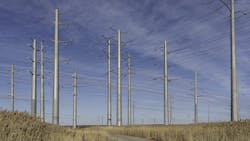Michigan Commission Presents Study on Power Grid Integration, Recommendations for EV Adoption, DERs
The Michigan Public Service Commission (MPSC) has submitted a study to the state Legislature on power grid integration in Michigan. The study addresses the increased demand for electricity resulting from the adoption of electric vehicles (EVs) and electrification. It also outlines recommendations for integrating distributed energy resources (DERs) into the state’s distribution grid.
The study was prompted by Senate Resolution 143 of 2020, which requested the MPSC to examine the integration of customer-owned electric generation resources such as wind, solar, and energy storage. The Senate acknowledged that Michigan’s electric grid is not equipped to handle modern electrification demands or significant distributed generation (DG). The MPSC was asked to collaborate with utilities on a study focusing on reliability, interconnection, DER growth, grid design and operation changes, and costs and benefits.
The study builds on the Commission’s MI Power Grid initiative launched in 2019. It aims to maximize the benefits of transitioning from large, centralized power plants to smaller distributed clean energy resources in Michigan. The MI Power Grid Distribution System Data Access workgroup led the grid integration study, working with utility representatives, experts, and stakeholders. The MPSC also received technical assistance from the U.S. Department of Energy’s National Renewable Energy Laboratory.
The Grid Integration Study Report examines potential impacts of expanded DER, EV, and electrification integration on the grid. It analyzes how these impacts could affect grid design and operation, as well as the associated costs and benefits. The study also explores ways to reduce administrative costs for contractors, developers, site hosts, and customers. It highlights the benefits of publicly accessible mapping and grid-integration tools to prepare for increased demand and DG.
The study provides recommendations to address these concerns and suggests steps for expanded DER integration into the distribution grid:
- Improve utility hosting capacity maps and data availability for DER integration. Consider substation-level load statistics, data export/download capabilities, and display data on GIS maps while protecting customer data and privacy.
- Simplify publicly accessible hosting capacity maps for customers and DER developers. Use color-coded indicators to identify areas with high, moderate, or limited hosting capacity, like other states’ practices.
- Explore establishing a minimum level of electric service for all residential customers, ensuring the grid can accommodate DERs and EVs. This may require customer service panel upgrades for older homes, which can be costly. Federal programs and funding sources should be leveraged to achieve equitable access to DERs and EVs.
- Investigate costs and best practices for automating hosting capacity maps to ensure regular updates.
- Develop new tariffs for distributed generation and DCFC EV charging, considering the impact of rate design on these matters.
About the Author
T&D World Staff
Content Team
Nikki Chandler
Group Editorial Director, Energy
[email protected]
Jeff Postelwait
Managing Editor
[email protected]
Christina Marsh
Senior Editor
[email protected]
Ryan Baker
Associate Editor
[email protected]
Amy Fischbach
Electric Utility Operations
[email protected]
Rich Maxwell
Community Editor
[email protected]
Gene Wolf
Technical Editor
[email protected]
